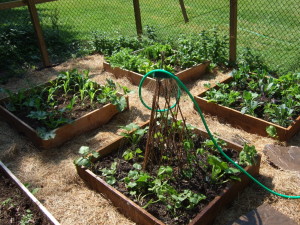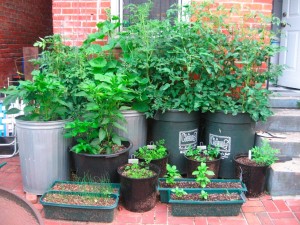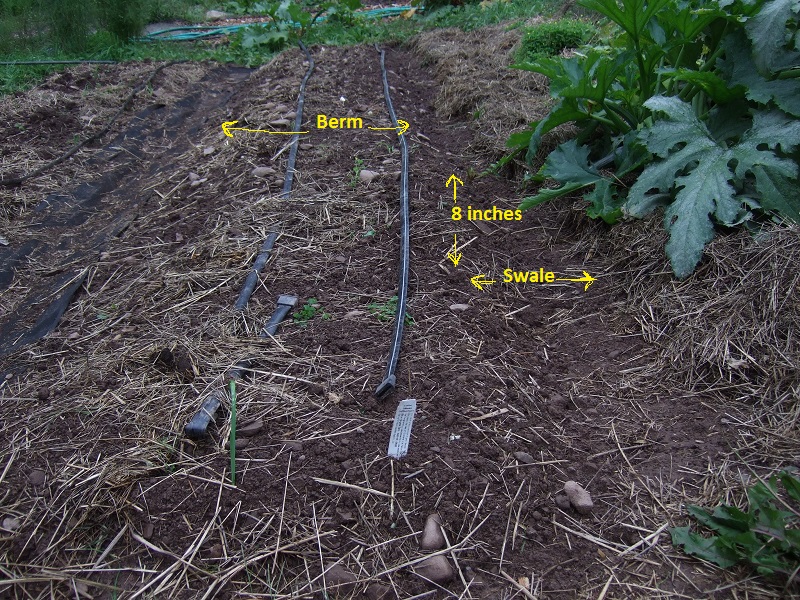When you think of a vegetable garden, do you picture wooden boxes of soil, or a big tilled patch with long rows? Do you picture your garden in pots? Each method has it’s individual merits, and it depends on your style! (And your site, time and physical limitations.)
Raised beds
Framed raised beds, like their name suggests, raise the surface of the soil, so one does not have to bend over quite as far to reach the plants. Wood-framed ones are the most common and least expensive, but brick, stone and masonry-framed ones are possible too.

- Wood-framed raised beds filled with a topsoil/compost blend
They can be as short as 10 inches or tall as 3 feet for wheelchair-bound or elderly gardeners. For gardeners cursed with rocky soil, (like 99% of those in the Catskills) raised beds spare one from digging so much since the beds are filled with a friable mix of topsoil and composted manure. What if you don’t have a lot of space or you are renting? Raised beds and garden containers allow the growing space to be relatively modular and concentrated in a smaller area, so you can have a garden if you only have a sliver of a yard or sunny patio.
The disadvantages of raised beds can be the cost of materials to build them, since not only do you need lumber or stone, you also need to acquire the soil mix to fill them and hardware to keep the beds together. They also heat up faster and drain more quickly, which is good and bad, depending on the time of year. They need to be topped up every year, as organic matter evaporates and settles, and the loose soil and protected sides seem to invite rodents to burrow under them, unless you’ve put a protective hardwire cloth barrier below the soil first.
Gardening in pots
This is the easiest method if you are a renter, do not have a sunny space in the yard, or are growing small quantities. The downside to growing in containers is the increased need to water, as pots dry out faster than crops in the ground. Earthboxes are a great choice for those can’t water every day, as they contain a water reservoir that can be filled to keep the soil moist via capillary action. 
If pots are your preferred method, you must fill them them a growing medium designed for pots, rather than digging up soil from the ground, or using topsoil. These do not drain properly in containers. Garden centers carry several kinds of potting mix. My favorite is the Black Gold brand. Its of high quality and holds moisture well.
Gardening in the ground
If space is not an issue, and your soil is decent, unframed soil mounds or soil berms may be a better option for you since you can make the beds any shape and length you want. I prefer this to the large tilled up patch with rows, because I like to keep the beds in the same place, and continually add material to them, which results in very loose soil rich in organic matter. Permaculture-inspired gardeners often use soil berms in combination with a trough (swale) to capture water that settles in that trough, directing moisture by capillary action into the berm.  Both the berm and swale are created at the same time, because as you dig the swale, you pile soil to the downhill side of it, creating the berm. Thirsty crops like onions and celery are planted in the trough while dry tolerant plants like sage or strawberries are planted on the berms.
Both the berm and swale are created at the same time, because as you dig the swale, you pile soil to the downhill side of it, creating the berm. Thirsty crops like onions and celery are planted in the trough while dry tolerant plants like sage or strawberries are planted on the berms.
Match your garden bed method to the size of your space, the type of soil you have, and your physical limitations and you’ll have a tailor made garden that will be a joy to work in.

